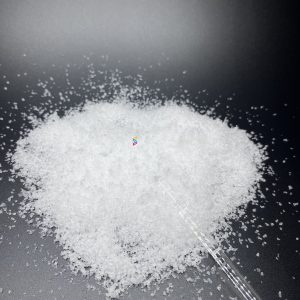Superabsorbent polymers (SAPs), widely used in products like diapers and other hygiene items, often refer to sodium polyacrylate. This versatile substance is produced globally by major manufacturers through the polymerization of acrylic acid, which is neutralized with sodium to form a sodium salt.

Polymerization Process
Polymerization is a fundamental chemical process where individual molecules, called monomers, react to form long chains, creating a polymer. This process is crucial in the production of a variety of plastics and other materials.
In the case of sodium polyacrylate, the base monomer is acrylic acid. Acrylic acid is the simplest unsaturated carboxylic acid, composed of carbon, hydrogen, and oxygen molecules. When acrylic acid molecules undergo polymerization in the presence of sodium, they form the sodium polyacrylate polymer. Sodium, an essential element well-known from common table salt (sodium chloride), plays a key role in this reaction.
Unique Properties of Sodium Polyacrylate
Sodium polyacrylate is particularly notable for its incredible ability to absorb and retain large quantities of water—up to hundreds of times its weight. Unlike sponges or fluff pulp, which release water when squeezed, sodium polyacrylate maintains its absorption even under pressure. This characteristic makes it invaluable in applications where water retention and absorption are critical. Additionally, SAPs are non-toxic, making them safe for use in consumer products.
Variants and Applications
Besides sodium polyacrylate, superabsorbent polymers can also be made using potassium as the neutralizing agent, resulting in potassium polyacrylamide or potassium polyacrylate. These variants share similar absorbent properties with sodium polyacrylate but are particularly useful in agricultural applications. For instance, they help conserve water in soil, promoting efficient water usage and enhancing crop growth.
Manufacturing and Environmental Impact
The production of SAPs involves complex chemical processes and significant energy consumption. However, advancements in manufacturing technologies are continually improving the efficiency and sustainability of these processes. Research is ongoing to develop biodegradable SAPs to address environmental concerns associated with synthetic polymers.
Future Prospects
The future of superabsorbent polymers looks promising, with potential applications expanding beyond current uses. Innovations in medical fields, environmental management, and advanced materials science could leverage the unique properties of SAPs, leading to new and improved solutions for water management, waste treatment, and beyond.
In summary, superabsorbent polymers like sodium polyacrylate are fascinating materials with remarkable water-absorbing capabilities. Their versatility and safety have made them indispensable in various industries, and ongoing research continues to unlock new potentials for these extraordinary polymers.

